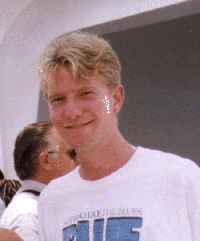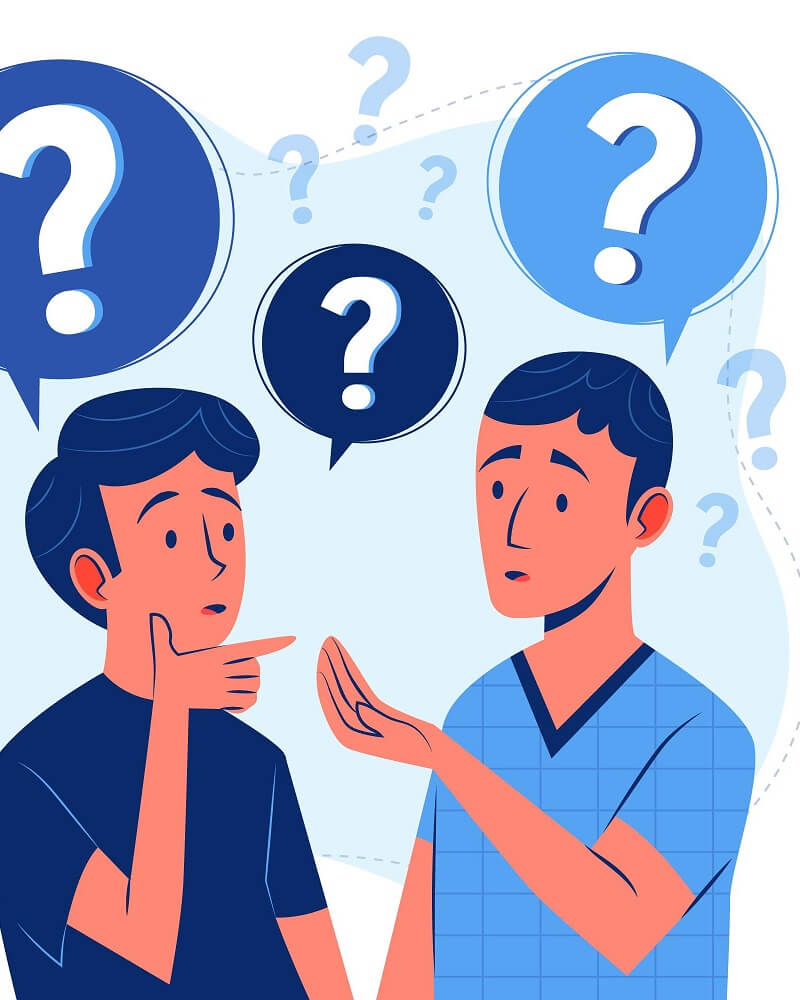Book Blaster Issue 12
“Words floated onto a ‘notepad’ in my mind”
Peter Thomson is a highly skilled businessman who sold his last business for a few million pounds several years ago and now spends his time running a management training company called Results International based in Leamington Spa. I’ve heard Peter’s presentations several times on various marketing seminars I’ve attended. He’s recorded several CD sets on for personal and business development and published three business books. He has even been described as ‘Britain’s leading personal development and corporate communications strategist’.
Peter is full of energy and very open-minded, so when I told him about PhotoReading he got the Personal Learning Course and gave it a try. He was delighted with the results.
“It was incredible. Once I’d learned to relax my focus on the page I seemed to enter a new dimension. the words just seemed to float dreamily off the page and embed themselves on a ‘notepad’ in my mind. It was a strange experience, but very exciting. I tried the Dictionary Game with my own dictionary at home and I got a few perfect hits — but only if I turned the dictionary upside down!
In other words, if I guessed the word was 10th word down on the left-hand column of a left-hand page, it was actually 10th word up on the right-hand column of a right-hand page. I was delighted as you can imagine. I’ve always been interested in intuition, coincidences and deja-vu. The other day I thought again about one of my favourite books, Jonathan Livingstone Seagull by Richard Bach. I’d been searching for it for ages without results. This time I went into PhotoFocus and recalled exactly where it was! Once I’d located the book I opened it apparently at random and my eyes immediately fell on the exact passage I was searching for. It was amazing.”
Peter was also open minded enough to try our MindLab Orion relaxation device — and he loves that too.
“I learnt to do TM (Transcendental Meditation) a few years ago, and I’ve found it really useful. I do it religiously for 20 minutes every morning and evening. I’ve used the MindLab Orion before my TM, and it helps to clear my mind so I go a little deeper into my meditation. I’m really looking forward to using both PhotoReading and the MindLab Orion to help create my next book and future CD sets.”
If you are interested, Peter’s three books are the Pinnacle Principle, Sell Your Way to the Top and the Secrets of Communication. Peter has also recorded five six-CD album sets: Conversation Power, Accomp-lishment, Lead the Field, Fire Your Boss and Hire Yourself and Vocabulary Power.
In addition there’s a 15-CD set called Action is the Key, and a two-CD set called Secrets of Communication. And Peter has recently launched the Achiever’s Edge, an audio newsletter published every month.
Drug abuser transformed by PhotoReading
 Today, after placing himself into a drug and alcohol rehabilitation centre, learning ways to control emotions, and giving up limiting beliefs, DJ Paris is back in life earning A-grades at Miami University. He attributes some of his school success to PhotoReading and the tangerine technique.
Today, after placing himself into a drug and alcohol rehabilitation centre, learning ways to control emotions, and giving up limiting beliefs, DJ Paris is back in life earning A-grades at Miami University. He attributes some of his school success to PhotoReading and the tangerine technique.
“Nearly all of my reading problems dissolved. It teaches how to trust your hidden genius. As a matter of fact, when I get into the flow state, life becomes easier and I make better decisions. I can go into any situation in a peak state for performance!”
He ordered the title New Behaviour Generator {SEE HERE} as an editor’s favourite in a catalogue, and he found immediate success.
“This autumn I was selected to represent Miami University in a national leader’s program. Before the conference I used the New Behaviour Generator to take on specific behaviours to make sure I would have the best experience ever,” he writes.
“People were astonished at my level of excitement and my ability to turn every situation into a positive learning experience.”
DJ advises, “Find someone who has already produced results you desire, use the New Behaviour Generator, and learn by their experience.”
“I wrote a novel in three days, thanks to the PhotoReading whole mind system”
 Writer primed his mind with books before he began writing.
Writer primed his mind with books before he began writing.
Have you ever wanted to write a novel? Ron Cyphers from Denton, Texas, did.As a matter of fact, he used PhotoReading to write one in three days.
“Last year,” he writes, “I participated in the 19th annual Anvil Press 3-Day Novel Writing Contest. I found out about it just two weeks before the event. Every day until the contest I PhotoRead books on writing plus books by Carl Jung, Camille Paglia, and others to build a subconscious background on archetypes and general enriching.
I sequestered myself with three other writers during the event. I never experienced writer’s block. In fact, my story flowed out of my fingers into my computer with a pleasing richness and depth,” he writes.
“My story, Butterfly Dreams, had interesting ideas and references I can only attribute to the books I absorbed at an other-than-conscious level. I was surprised to find elements relating back to these books even though I did not consciously remember the materials in the first place.”
Other writers have reported similar experiences. After PhotoReading dozens of mystery books, one writer began sending the first or second draft to his agent instead of his usual sixth or seventh. A romance novelist said whenever writer’s block set in, she would PhotoRead several novels — instantly ideas would flow.
Writers often comment on the difficulty of finding enough time to feed their brain. As Ron says, the ability to absorb a great deal of information for the brain to distil is valuable to writers. Ron was sceptical about PhotoReading in the beginning so he adopted the same attitude he has when seeing a movie. “I act as if the movie is real — then I get fully absorbed. I acted as if PhotoReading were real, and it worked!”
“Solutions pop into my mind when I let my subconscious take over”
“It is like sitting in front of a panel of experts and being able to shoot questions to them,” says Huy Nguyen, a Process Development Engineer for 3M Company in St. Paul, Minnesota.
He refers to PhotoReading and activating multiple books on a single topic during a short period of time. This process of “syntopic” reading allows Nguyen to absorb and synthesise considerable amounts of information that would have required hours of work without the PhotoReading whole mind system — work, he admits, he wouldn’t have been able to do.
His syntopic reading has led to improvement in his strategic planning sessions. “Now, after gathering and absorbing all the information I can, I back away and let my subconscious mind take over,” says Nguyen. “Within a day, solutions become clear to me. they just pop into my mind.”
This improved connection with the subconscious mind is often reported by Photo-Readers. It also shows itself in other areas of Nguyen’s work.
“When I give presentations, I find it much easier to get the point across,” he says. When asked for a tip to share, he offers, “Believe your mind can do it, and let it happen.”
Nguyen learned Photo-Reading in one of the regularly scheduled classes offered on the 3M St. Paul campus (classes are also offered at other 3M sites). 3M — the company which invented Post-It Notes, and makes sticky CD, glues etc — offers monthly support sessions with additional 90-minute programs such as Learning Styles: How do you learn, perform & concentrate?, Brain Relief: Tactical reading for information overload, and Mind Mapping. these special programs are open to all employees, not just PhotoReaders.
“Conclusive proof that Photo-Reading works”
Dear Chris,
I recently had an astounding “Ah-Ha!” experience.
Having used PhotoReading intermittently for the best part of two years with several sucesses, I realised that I had not given it the time it really deserved, by integrating it more fully into my daily activities.
Both on its own as a whole mind system and used in conjuction with my MindLab, it has brought many hours of pleasure but I often failed to attribute the success to PhotoReading until now.
Last Monday I sat down intent on PhotoReading a book that I have owned for at least 15 months. The Oxford Companion To the Mind by Richard Gregory has a massive 800-odd pages, and it sat there taunting me to pick it up and get on with it. This was to be the night. I prepared myself at some length, PhotoRead the book and finished ‘with mastery’ as Paul Scheele would say.
Really I felt that nothing had happened and nothing was gained. I then returned to normal reading another book. the following evening, on my way back from work, I had been thinking about several inventions that I would love to patent and produce. I had also been speaking to a friend who recommended that I trust my gut feeling and go with my intuition.
From nowhere I found myself thinking “389, right-hand page, left-hand column and third part down”. I had no idea what this referred to, but after dinner I decided to check the books that I PhotoRead the night before. Astoundingly the thoughts made sense. there within the Oxford Companion To the Mind, on page 389 (a right-hand page), left-hand column, third paragraph, was a section on Intuition followed immediately by another paragraph on Invention!
The verbatim definition under Intuition stated: “Arriving at decisions or conclusions without explicit or conscious process or reasoned thinking.” To me this is final and conclusive proof of the stunning impact of PhotoReading. Last night, before bed, I then PhotoRead the Tibetan Book of Living and Dying and the Art of Traversing the Between. I can honestly say that I had some interesting dreams but that would be another letter in itself!
Richard Townsend, Bishops Stortford Herts.
“I passed four-hour counselling exam with flying colours!”
Soon after learning the PhotoReading whole mind system, Bernard Sharkus of Tucson, Arizona, took the national exam for professional counsellors as part of the certification process.
He writes how the experience has forever changed the way he learns information. “I had heard the exam was difficult unless you had just finished a graduate program and prepared extensively. Well, the last class I had taken was 15 years prior, and I did very poorly on the sample exam.
“I knew I could retake the test if I failed, so I decided to put PhotoReading to the test! I borrowed about 3,000 pages of study materials from a friend and PhotoRead them twice (my arm was sore from turning pages!). I used the Paraliminal title, Belief, before PhotoReading to install useful beliefs that I could quickly and easily learn and recall the materials through PhotoReading. I then listened to the Memory Supercharger to improve recall. I also listened to Dream Play to enhance my unconscious learnings and my preparations for the exam.
On the morning of the exam I used the Memory Supercharger to enhance recall and help relax me. I took the four-hour exam — one of the most difficult tests I had ever taken — and passed with flying colours! After spending just three hours actually studying. This experience was the convincer for me of the power of my brain, and I have been PhotoReading ever since.”
Editor’s note: Other people have reported similar successes in preparing for professional exams and in taking graduate-level courses. As a PhotoReader once said, “I’m 31 years old. Who cares if I don’t pass this test.” Adapting this attitude removes pressure and allows the brain to perform better.
Help! I can’t get it to work!
Sometimes we get phone calls or letters from people who have started or even finished the PhotoReading course and can’t seem to make it work. If my staff can’t help them get results, then what I usually do is ring these people up and talk their problem through.
This is what I invariably find: they’re trying too hard. One man said he took several minutes to get into PhotoFocus — when it should take a few seconds!
I remember making the same mistake about three years ago when I was in a fortnightly meditation group. We had to do a simple exercise each morning: go round each limb and relax it. I went to one evening meeting and reported that one day this had taken me an hour!
I’m sure you can see that this is nonsense — it’s easier to see other people’s foolishness than our own.
If you too are stuck, then consider thinking of it this way: it’s as if you are pushing with all your might at a door, sweating profusely and getting very frustrated. If only you’d step back and appraise the situation more objectively. then you’d realise that there’s a sign on the door. It’s marked ‘Pull’ !
PhotoReading is a simple process — and the way to step back and look at the situation objectively is to stop and relax, and by that I mean really stop. Close your eyes and take a long in-breath counting one, two, three, four. Hold for four counts and breathe out slowly for four counts. Do three further breaths in and out for a count of four. Now it’s time to let go of your current beliefs and way of doing things. Imagine opening a box and putting all your limiting beliefs and ways of doing things in this box and close its lid with a bang. Push the box out of the way.
Open your eyes half way, staying relaxed and in a dreamy state. Take a book you want to PhotoRead (no more than 150-200 pages for now) and state a simple but specific purpose, spending no more than 30 seconds. Imagine a tangerine in your hand and place it on the top back part of your head. Now imagine looking at the book from the tangerine’s perspective (spending no more than 30 seconds). You may notice that your field of vision has widened. In tests, this step alone has been shown to increase people’s normal reading speed significantly.
Now start turning the pages of your book. If you haven’t seen the blip page so far, just relax and simply take in all four corners of the book and notice the white spaces as you turn each page. Say REE… LAX as you turn the pages — one page a second. Keep the page turning at an even rhythm. If you turn two pages at once, carry on regardless, because when you reach the end of the book, turn it upside down and PhotoRead from back to front. You’re bound to catch any pages you missed on this second run-through.
When you’ve finished, do the usual affirmation with eyes closed: “Everything I have PhotoRead has made a lasting impression on my inner mind and is available to me.” Stay relaxed for a few minutes and imagine the book’s contents being processed by your mind.
Wait 20 minutes, then pick up the book again. Bring your purpose to mind, and see if you can get all the information you need to fulfil that purpose in no more than 20-30 minutes. PhotoRead every couple of days.
It’s like the old story of a young man who stopped an elderly gentleman on the streets of New York and asked, “How do you get to Carnegie Hall?”. The gentleman, who happened to be a famous cellist, replied, “Practise, practise, practise”.
Even if you think you need to learn more steps first, practise PhotoReading books anyway — because only then will you get the “A-ha! It works!”
Improve Activation by working out your best learning style
Another common comment when people ring or write is: “I try activating and nothing happens.”
First you need to determine your predominant learning style. Are you auditory, visual or kinesthetic (feeling)?
Examples of each are set out in a fabulous new book called Accelerated Learning for the 21st Century: the Six Step Plan to Unlock Your Master Mind by Colin Rose and Malcolm Nicholl . Colin wrote the superb book Accelerated Learning, and created the Accelerated French, German, Spanish and Italian 12-CD sets (available from Accelerated Learning).
Looking at the tables on pages 93 to 95 in Colin’s new book, I could tell that I was mainly auditory, which means that… I love listening to radio debates and storytellers at festivals; I love to talk on the phone, and discuss philosophical subjects. When I get home I put on a CD straight away, or I’ll debate issues loudly in my head! Are you like this?
Visuals generally love TV and movies; “never forget a face”; prefer using a map rather than written directions; like drawing and doodling; prefer face-to-face contact; prefer to be shown what to do rather than told what to do.
Kinesthetics love sport, dancing, hiking; remember past events well; like to relate to people while on a walk etc; fidget during quiet times; like to touch others; say “this doesn’t feel right” and “I can’t get to grips with this”.
In a study of 5,000 students in the US, Hong Kong and Japan, 29% were visuals, 34% auditory and 37% kinesthetic.
You may relate to elements in all three style — but one fits with you the best. You should gear your PhotoReading activation to your prefered learning style — but still try exercises from the other styles.
Here’s some exercises Colin Rose recommends — but you’ll find more detailed explanations in his new book.
Auditory exercises
Summarise out loud
Discuss what you think the book’s about with a friend
Imagine the author sitting opposite you. Ask him/her a question and listen to the answer.
Visual exercises
Use mind maps
Mark new information with a highlighter pen (not important info or points you agree with)
Make a mental movie of what you’ve just read
Draw a sketch, chart or diagram
Kinesthetic exercises
Walk about every 25-30 minutes
Doodle, underline in colour, jot notes and make mind maps
Try working from a board on your lap rather than at a desk
Write brief notes on Post-it notes, then move them around a large sheet of paper to sort out your thoughts physically (or you can use small index cards).
Tick each paragraph once you’ve understood it
Draw a chart or graph — or even make a simple model
Paul Scheele tells a story on our PhotoReading: Your Questions Answered CD about a kinesthetic lady who had no idea of the content of the book she had just PhotoRead. Paul got her to move her hands in space to sculpt what the book was about. Soon afterwards she described her imaginary sculpture, and she was amazed to discover that she’d captured the many ideas in the book.
Dictionary Game
Take into consideration your learning style while doing the Dictionary Game.
Visual? See the position of the word on the page. the word may look brighter.
Auditory? Listen to your inner voice. (I remember hearing “left, left, eight” — and the word was left, left, ninth word down.)
Kinesthetic? Does it feel as if the word is on a left or right page? Try it — and let us know what happens!
Accelerated Learning for the 21st Century is a stunning addition to your growing reference library.


